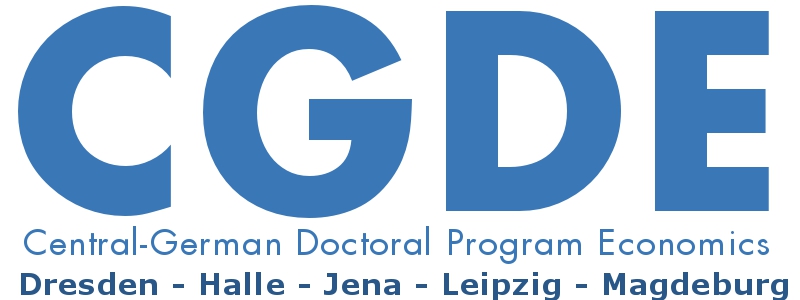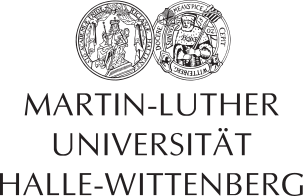Frontiers in Microeconomics
Economics of Asymmetric Information
Lecturer: Prof. Roland Strausz (Humboldt‐Universität Berlin)
Date: February 28, 2011 – March 2, 2011 (Universität Leipzig), daily from 09:30 – 16:00
Venue: Universität Leipzig, Grimmaische Straße 12, Room: SR S 211, Seminargebäude
Registration: sprenger@wifa.uni-leipzig.de
Course Description
The course gives an advanced (PhD‐level) introduction to the economics of asymmetric information and points students towards active research questions. It first identifies how different types of asymmetric information affect markets and bilateral economic relationships. It thereby identifies and classifies the different types of asymmetric information and the standard economic models that capture them. It, secondly, discusses by example how these standard models are currently applied and extended in recent research.
Course Outline
1 Asymmetric information in markets
1.1 Adverse selection in markets
1.2 Signaling in markets
1.3 Screening in markets
2 Asymmetric information in bilateral relationships
2.1 Hidden actions (moral hazard)
2.2 Hidden information (monopolistic screening)
2.3 Mixed models and an application to monopoly regulation
3 Current Issues in mechanism design and organization theory
3.1 Revelation principles
3.2 Dynamic mechanism design
3.3 Organizational Design
Reading list
Text books
[1] Bolton, P. and M. Dewatripont (2005), Contract Theory, MIT Press, Cambridge (Mass.).
[2] Laffont, J.‐J. and D. Martimort (2002), The Theory of Incentives, Princeton University Press, Princeton. ( pdf_1; pdf_2; pdf_3)
[3] Mas‐Colell, A., Whinston, M. D. and J. R. Green (1995), Microeconomic Theory, Oxford University Press, Oxford. ( pdf_1; pdf_2; pdf_3)
[4] Myerson, R. (1997) Game Theory: Analysis of Conflict, Harvard University Press.
Seminal articles
[1] Akerlof , G. (1970) “ The Market for „Lemons“: Quality Uncertainty and the Market Mechanism”, The Quarterly Journal of Economics, 84, 488‐500.
[2] Baron, D. and R. Myerson (1982) “ Regulating a Monopolist with Unknown Costs.“ Econometrica, 50, 911‐930.
[3] Hölmström, B. (1979), “ Moral Hazard and Observability” The Bell Journal of Economics, 10, 74‐91.
[4] Laffont, J.J. and J. Tirole (1986) “ Using Cost Observations to Regulate Firms” Journal of Political Economy, 94: 614‐641.
[5] Laffont, J.J. and J. Tirole (1988) “ Dynamics of Incentive Contracts,” Econometrica, 56, 1153‐1175.
[6] Myerson, R. (1981), “ Optimal Auction Design”, Mathematics of Operations Research, 6, 58‐73.
[7] Rothschild, M. and J. Stiglitz (1976) “ Equilibrium in Competitive Insurance Markets: An Essay on the Economics of Imperfect Information” The Quarterly Journal of Economics, 90, 629‐649.
[8] Shavell , S. (1979) “ Risk Sharing and Incentives in the Principal and Agent Relationship„, The Bell Journal of Economics, Vol. 10, No. 1., pp. 55-73.
[9] Spence, M. (1973) “ Job Market Signaling”, The Quarterly Journal of Economics, 87, 355‐374.
[10] Wilson, C. (1977) “ A Model of Insurance Markets with Incomplete Information”, Journal of Economic Theory 16, 167‐207.
Current working papers
Topic 1.1: Creane and Jeitschko (2010) “ Endogenous Entry in Markets with Adverse Selection,“ mimeo, Michigan State University.
Topic 1.2: Stahl and Strausz (2010), “ Who pays for certification”, mimeo, Humboldt Universität.
Topic 1.3: Attar; Mariotti; Salanie (2010), “ Non‐exclusive Competition in the Market for Lemons”, mimeo, Toulouse School of Economics.
Topic 2.1: Rahman, Obara (2010), “ Mediated Partnerships“ , Econometrica, 78(1): 285‐308
Topic 2.2: Hellwig (2010), “ Incentive Problems With Unidimensional Hidden Characteristics: A Unified Approach”, Econometrica 78, 1201‐1239.
Topic 2.3: Strausz (2010), “ Regulatory Risk under Optimal Incentive Regulation„, mimeo, Humboldt Universität.
Topic 3.1: Strausz, “ Mediated Contracts and Mechanism Design„, mimeo, Humboldt Universität.
Topic 3.2: Krähmer, Strausz, “ Optimal Procurement Contracts with Pre–Project Planning„, mimeo Humboldt Universität.
Topic 3.3: Shin, Strausz, “ Hierarchical Structures and Dynamic Incentives„, mimeo Humboldt Universität.























